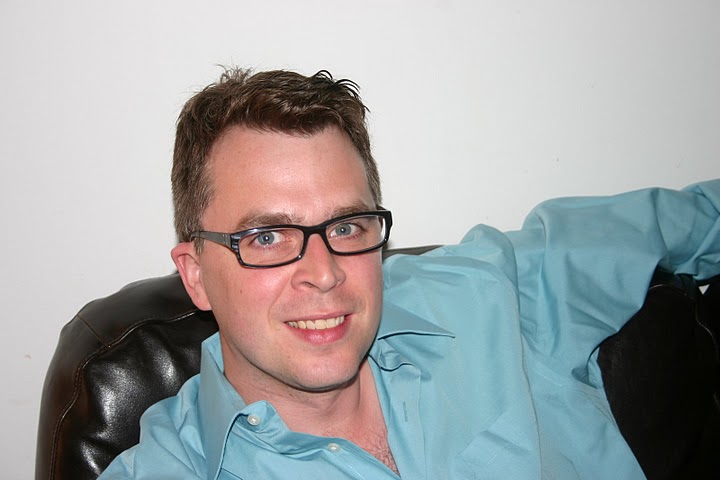Podcast: Play in new window | Download | Embed
Subscribe: RSS
 Matthew Putman is the most eclectic guest I have had on Singularity 1 on 1. Matthew is a PhD in applied mathematics and engineering, Professor at Columbia University, a Thiel fellowship mentor, entrepreneur, poet, jazz pianist, inventor holding patents in nano-imaging, film and theater producer, and a cancer survivor.
Matthew Putman is the most eclectic guest I have had on Singularity 1 on 1. Matthew is a PhD in applied mathematics and engineering, Professor at Columbia University, a Thiel fellowship mentor, entrepreneur, poet, jazz pianist, inventor holding patents in nano-imaging, film and theater producer, and a cancer survivor.
After spending over an hour talking to Putman I feel confident in saying that he is indeed an eclectic genius extraordinaire who is not afraid to embrace his humanity and follow his passions. So, while some of his friends have noted that Matthew’s eclecticism is “not the best route to target a Nobel prize”, they acknowledge that Putman is a lot of fun to be around. I can attest to the latter myself because I enjoyed very much having him on my show and am looking forward to our first face-to-face conversation.
During my interview with Matthew Putman we cover a variety of topics such as: why he considers himself to be a producer, first and foremost; the contradiction between being a Thiel mentor and a Columbia University Professor; the present and future of education; the importance of experimentation; his work in polymers and semiconductors; nanotechnology and Nanotronics Imaging; Henry Markram’s Human Brain Project and other such initiatives; his fear of death and his personal struggle with cancer; his take on immortality and the technological singularity; determinism and free will.
As always you can listen to or download the audio file above or scroll down and watch the video interview in full. To show your support you can write a review on iTunes, make a direct donation, or become a patron on Patreon.
Who is Matthew Putman?
Matthew Putman is a musician, scientist, producer and author currently living in Brooklyn, NY with his wife Marine and two children. He is a Researcher at Columbia University, and the founder and CEO of Nanotronics Imaging. His area of scientific focus includes advanced materials, and nanosystems. He teaches courses on new unique ways to use nanoparticles in polymers for the creation of flexible electronics, bio-scaffolds, flexible solar panels and other cutting edge areas of material science. Nanotronics is a growing business in high resolution imaging that is currently providing unique process control and research tools for the semiconductor industry as well as life sciences.
As a musician he has received acclaim from for his first album Perennial which was released in August 2008, and the quintet called The Gowanus Recordings. Matthew is an inventor who holds patents in several areas including a new microscope with extremely high resolution. He has co-authored technical papers, and received the American Chemical Society Best Paper Award. He was an owner of the technology company Tech Pro which was purchased by Roper Industries in 2008. Matthew is a published poet, whose book Magnificent Chaos has just been published and is available.
Matthew has worked as a music, theater and film producer. In the 1990’s he produced a monthly series of readings of new works at Lincoln Center. He also worked with playwrights such as Israel Horovitz whom he managed the Gloucester Stage Company with in 2000. Matthew was a producer of the off-Broadway play Perdita by Pierre-Marc Diennet, with his wife Marine which played at the Lion Theater on Theater Row. Matthew and Marine have also worked together as Associate Producers of the award winning film Definition of Insanity. Matthew is an Executive Board Member of The Montauk Observatory, and a founding benefactor and advisor of the World Science Festival. He is also an Artist in Residence for Imagine Science. Matthew is recently an adviser for the not-for profit The Cure Is Now. Matthew is an adviser and investor in Plexus Entertainment Group, a leader in online movie distribution.
Currently Matthew is working an affordable test for cervical cancer to be used in Sub Saharan Africa. He is also composing a ballet based on the life of Kurt Godel.



 Dr. Kaku addresses the question of the possibility of utopia, the perfect society that people have tried to create throughout history.
Dr. Kaku addresses the question of the possibility of utopia, the perfect society that people have tried to create throughout history. What is Grey Goo?
What is Grey Goo? CMStewart is a psychological horror novelist, a Singularity enthusiast, and a blogger. You can follow her on
CMStewart is a psychological horror novelist, a Singularity enthusiast, and a blogger. You can follow her on 
![Reblog this post [with Zemanta]](https://img.zemanta.com/reblog_e.png?x-id=58d030f1-86fb-4aba-89ce-4d719ffc1674)